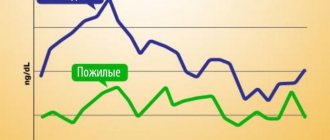Has restrictions during pregnancy
Prohibited during breastfeeding
Prohibited for children
Has restrictions for older people
Has limitations for liver problems
Has limitations for kidney problems
Somnol is a hypnotic and sedative drug used in neurology. Produced by the Latvian pharmaceutical company Grindeks. The medicine is used in many EU countries, as well as in Russia, Ukraine, Belarus, etc.
Medicines are used mainly when herbal sedatives do not bring the expected effect. In this case, it is necessary to read the instructions for use of Somnol, paying special attention to contraindications and dosage rules for the drug.
General information about the drug
Somnol is a fairly strong sleeping pill and sedative.
The condition for dispensing from pharmacies is only with a prescription from the attending physician. The drug Somnol is included in the pharmacotherapeutic group of hypnotics and sedatives. INN – Zopiclone. It is used in neurological practice to eliminate insomnia and problems falling asleep.
Release forms, composition and prices
Somnol is a film-coated tablet for oral administration. One tablet contains 7.5 mg of the active substance zopiclone. Approximate prices for medications in Russian pharmacies are presented in the table.
| Release form | Price in rubles | Pharmacy name, city |
| Tablets, No. 10 | 39 43 | Zdrav-City, Moscow LanaPharm, St. Petersburg |
| Tablets, No. 20 | 98 104 | Veropharm, Rostov-on-Don Laboratory of beauty and health, Tomsk |
Important! When purchasing a medication online, you must place an order only on those sites that are a virtual version of a real pharmacy chain. You should not purchase medications “from hand,” especially if the patient is promised to sell a prescription drug without a doctor’s prescription!
Drug interactions
An increased depressant effect on the central nervous system is observed with the simultaneous use of Somnol with antipsychotics (neuroleptics), hypnotics, tranquilizers, sedatives, antidepressants, opioid analgesics, anticonvulsants, anesthetics, antihistamines with a sedative effect, as well as erythromycin.
Somnol reduces the concentration of trimipramine in the blood plasma and its effect.
Simultaneous use with ethanol is not recommended, because the sedative effect of zopiclone may be enhanced.
Indications and contraindications for use
Somnol is prescribed to patients suffering from sleep problems and difficulty falling asleep. The drug is effective for all types of insomnia:
- passing;
- situational;
- chronic.
It is strictly unacceptable to take the medicine:
- if you are intolerant to any of the components of the drug;
- patients with severe respiratory failure;
- persons suffering from spontaneous sleep apnea;
Risk factors for developing sleep apnea - patients with pseudoparalytic myasthenia;
- with severe renal and liver failure;
- people with congenital galactose intolerance;
- with Lapp-lactase deficiency;
- with malabsorption of glucose-galactose;
- during lactation;
- throughout pregnancy.
The drug is intended for the treatment of sleep disorders in adult patients, so it is not prescribed to children under 18 years of age.
special instructions
When using Somnol, the risk of developing dependence is minimal, but the development of addiction to the drug and its abuse cannot be absolutely ruled out.
The risk of dependence or abuse arises in cases of violation of the dose and duration of treatment, abuse of alcohol and/or drugs, or use with alcohol or other psychotropic drugs.
The risk of developing rebound insomnia and withdrawal syndrome after abrupt cessation of taking Somnol cannot be excluded, especially after long-term therapy. Therefore, it is recommended to gradually reduce the dose of the drug and notify the patient about this.
Anterograde amnesia is possible, especially when sleep is interrupted or after a significant period of time between taking the drug and going to bed. To reduce the risk of anterograde dependence, you must take the tablet immediately before bed; Ensure sleep duration is at least 6 hours.
Somnol is not indicated for the treatment of depression and may even mask its symptoms.
During treatment you should avoid drinking alcohol.
Use in pediatrics
In children and adolescents under 18 years of age
A safe and effective dose
of Somnol has not been established.
Impact on the ability to drive vehicles and operate machinery
Due to its pharmacological properties, Somnol may have an adverse effect on the ability to drive and control vehicles. Therefore, after taking the drug, you should not drive vehicles.
Detailed instructions for use of the drug
The drug is intended for oral administration. You should take the tablet immediately before going to bed at night.
The course of treatment should be as short as possible and not exceed 28 days. The dose of the medicine may be adjusted depending on its effectiveness.
Prolongation of therapy is possible, but only after a thorough assessment of the patient's condition. Treatment begins with the minimum effective dose, which is gradually increased to the desired values.
Dosing Features
For adult patients (up to 65 years of age), one dosage regimen applies. It is recommended to take a maximum of 7.5 mg of Somnol per day, which is equal to 1 tablet.
For patients suffering from renal impairment, treatment is recommended to begin with a dose of 3.5 mg (half a tablet). The medication is taken once a day, before going to bed at night. It is important to adhere to these rules of therapy, even though the accumulation of zopiclone in patients with such diseases has not been recorded, and the elimination of the substance occurs at almost the same rate as in healthy people.
Storage conditions for the drug Somnol
The same rules for dosing medications apply to people with liver dysfunction. In this category of patients, drug elimination is reduced, so it is important to adhere to precautions. Gradually, the dose can be increased from 0.5 to 1 tablet of Somnol per day.
For patients suffering from respiratory failure, the drug can be prescribed only as a last resort. The maximum allowable dose is half a tablet. If therapy for this category of patients is ineffective, other sleeping pills are selected.
Treatment of insomnia in elderly people over 65 years of age begins with half a tablet. It is important to monitor the patient's condition as the daily dosage increases. In the absence of contraindications or ailments, it is adjusted to 7.5 mg.
Important! In all cases, the maximum permissible dose of Somnol is 7.5 mg. Exceeding the dose may have serious health consequences.
Duration of therapy
The duration of taking Somnol tablets depends on the type of insomnia they were prescribed for:
- For transient insomnia, the course of treatment lasts from 2 to 5 days.
- For the treatment of situational insomnia, the drug is prescribed in a course lasting from 2 to 3 weeks.
- For chronic insomnia, the duration of therapy is 4 weeks. But treatment can be prolonged after a re-examination by a neurologist and assessment of the patient’s condition.
Consequences of sleep disturbance
Each of these situations requires mandatory medical intervention. Self-medication with Somnol or its analogues can be dangerous if all the nuances of therapy are not taken into account.
Precautionary measures
When prescribing and taking tablets, special precautions should be taken in patients with:
- alcohol or drug addiction;
- arterial hypotension;
- depression or other conditions accompanied by central nervous system depression;
- mental disorders;
- paradoxical reactions;
- somnambulism;
- sleepwalking.
Please note that the drug may be addictive. If it is abruptly discontinued, the so-called withdrawal syndrome may develop. Some patients who stopped taking Somnol experienced rebound insomnia.
With such conditions, you should definitely contact a neurologist - you cannot try to fight them on your own, especially with the help of other medications, even if they are herbal.
Pharmacokinetics
Suction
After oral administration, zopiclone is rapidly absorbed from the gastrointestinal tract. Cmax in blood plasma is achieved within 1.5-2 hours and is about 30 ng/ml and 60 ng/ml after oral administration in doses of 3.75 mg and 7.5 mg, respectively. Absorption of the drug does not depend on gender or food intake.
Distribution
Plasma protein binding is about 45%.
After repeated use of the drug, accumulation of zopiclone and its metabolites does not occur.
Metabolism and excretion
The main metabolites are the N-oxide derivative (pharmacologically active) and the N-desmethyl metabolite (pharmacologically inactive). T1/2 is about 4.5 and 7.4 hours, respectively.
At recommended doses, T1/2 of unchanged zopiclone is about 5 hours. Zopiclone is excreted in the urine (about 80%) mainly in the form of metabolites, and in feces - about 16%.
Pharmacokinetics in special clinical situations
Interindividual differences are insignificant.
In elderly patients, despite a slight decrease in liver metabolism and an extension of T1/2 to approximately 7 hours, no accumulation of the drug in plasma was detected even with repeated use.
In patients with renal failure, no accumulation of zopiclone or its metabolites was detected, even after long-term use.
In patients with cirrhosis, the clearance of zopiclone is reduced by approximately 40%, consistent with decreased dimethylation.
Possible adverse reactions
The most common side effect when taking Somnol is the appearance of a metallic or bitter taste in the mouth. Negative reactions can manifest themselves in the appearance of:
- behavioral disorders;
- speech disorders;
- irritability;
- aggressiveness;
- delusional states;
- disorders of consciousness;
- causeless anxiety;
- somnambulism;
Somnambulism - feelings of euphoria;
- headache;
- ataxia;
- confusion;
- hallucinations;
- decreased concentration;
- drowsiness;
- insomnia;
- nightmares;
- depression;
- agitation;
- tension;
- changes in sexual behavior.
The heart often reacts to the use of tablets with tachycardia, and the skin and subcutaneous tissue:
- rash;
- itching;
- hypersensitivity reactions;
- hyperhidrosis;
- development of Steven-Johnson syndrome;
- Lyell's syndrome;
- erythema multiforme.
Often, taking pills leads to weight loss, nausea, and stomach pain. In patients with respiratory failure, the drug may cause shortness of breath or dyspnea.
Important! If any ailments associated with treatment with Somnol occur, its use must be stopped immediately. Even a single case of side effects can cause harm to the patient’s health.
Overdose
An overdose of Somnol is very dangerous, so you should not self-medicate if the drug was taken in an increased dose. The imaginary absence of ailments is also not proof that the overdose did not lead to undesirable consequences. Sometimes it can affect the results of a blood test.
Symptoms that may indicate a drug overdose include:
- drowsiness;
- confusion;
- apathetic states;
- ataxia;
- lethargy;
- hypotension;
- depression of respiratory function.
Ataxia
The intensity of symptoms depends on the dose of medication taken. Thus, with a significant excess of the permissible volume of the drug, as well as with a systematic overdose, not only the intensity of clinical manifestations increases, but also the risk of developing a coma.
It is important to consider that Somnol is not prescribed to patients with alcohol or drug addiction for use at home. Combining the medication with alcohol or drugs increases the risk of side effects, and also makes an overdose potentially life-threatening.
To eliminate the symptoms of overdose and prevent its possible consequences, a number of measures are carried out, including:
- taking activated carbon;
- gastric lavage;
- use of Flumazenil.
Such actions are carried out no later than an hour after an overdose of the drug. Otherwise, the patient may need urgent hospitalization with further more serious therapeutic measures.
Important! The use of Flumazenil as an antidote or diagnostic agent to clarify the diagnosis is unacceptable in case of concomitant overdose of other drugs.
Analogues of Somnol
The drug has direct structural analogues with which it can be replaced:
- Apo-Zopiclone. Tablet sleeping pills and sedatives. It is used in neurology for various types of insomnia, neuroses, neurasthenia as an auxiliary, sedative, medicine. The medication is not prescribed to pregnant, lactating women, children, or persons with hypersensitivity to its components.
Dobroson. Somnol substitute containing 7.5 mg of zopiclone in 1 tablet. The medicine is intended exclusively for the treatment of adult patients. Dobroson can be prescribed to pregnant women only in the 3rd trimester, and only under strict indications. During lactation, the medication is contraindicated.- Imovan. A potent hypnotic and sedative drug that has a depressant effect on the central nervous system. Helps normalize night sleep, eliminates nervousness, unreasonable fears, anxiety, and restlessness.
It is prescribed with caution to elderly patients, pregnant women in the last trimester of the gestational period, and patients with pathologies of the liver and kidneys. The medication is strictly contraindicated for children under 18 years of age, as well as for lactating mothers.
In addition to the analogues described above, Somnol can be replaced with Normason, Piclon, Sonnat, Sonovan, Zopiclone. All of these products contain the same active ingredient in the same dosages.
Due to such a wide range of generics, you should not independently select a Somnol substitute. The patient can easily make a mistake with his choice, which will only harm himself. Despite the almost identical composition of the drugs, they have some differences.
Reviews about the medicine
Reviews about Somnol are mostly positive from both patients and doctors.
Specialists
Doctors confirm the high effectiveness of the drug:
Taisiya Lukyanova (Adler): “Somnol is a potent sleeping pill. It has a rapid therapeutic effect and has a long-lasting effect. But it is quite difficult to find it in Russian pharmacies, so patients often have to prescribe substitutes with the same active ingredient.”
Egor Kashevarov (Surgut): “The use of Somnol is widespread in neurological practice in many European countries. The drug acts quickly, improves sleep, eliminates problems with falling asleep and relieves nightmares. It is usually well tolerated by patients, and the therapy provides the first positive results within 2-3 days from the moment it starts.”
pharmachologic effect
Sleeping pill, cyclopyrrolone derivative. It has hypnotic, sedative, tranquilizing, anticonvulsant and muscle relaxant effects. This spectrum of action is associated with the influence of zopiclone on CNS receptors related to the macromolecular GABA complex and modulation of the opening of channels for chloride ions.
Somnol reduces the time of falling asleep and the frequency of night awakenings, increases the duration of sleep, and helps improve the quality of sleep and awakening.
Addiction to the hypnotic effect of the drug does not develop during a long period of treatment, up to 17 weeks.





